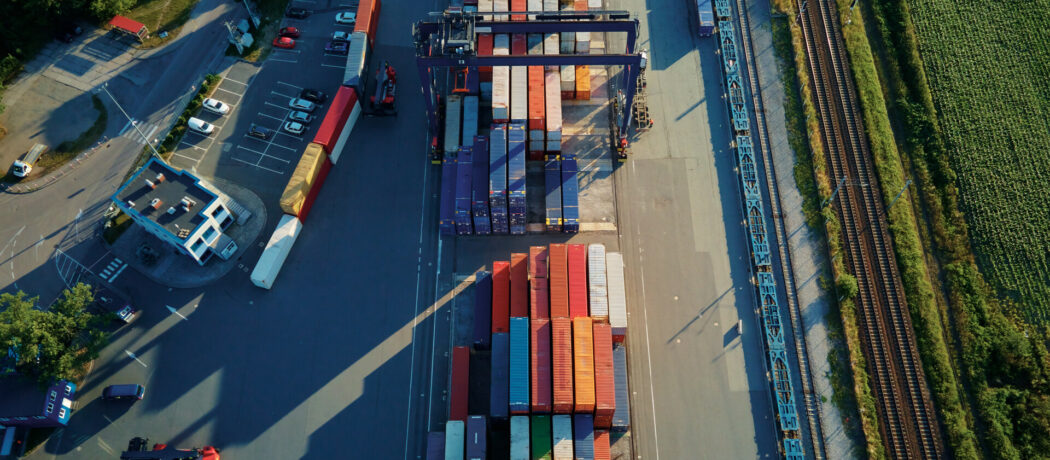Smarter ways to ship goods without increasing costs: a greener logistics strategy
Supply chains are dominated by trucks, and this is bad news for the environment, as they account for nearly a quarter of all road transport carbon emissions. Yet the carbon footprint and efficiency of freight can be improved by integrating rail transport and implementing smarter inventory strategies, without impacting costs.

Share
Based on an interview with Stefan CREEMERS on his paper “Breaking truck dominance in supply chains: Proactive freight consolidation and modal split transport,” co-written with Bram DE MOOR and Robert BOUTE (KU Leuven), published in International Journal of Production Economics, March 2023.
A ‘perfect storm’ for freight change
Road is one of the most polluting transport modes: it is responsible for 77% of European transport greenhouse gas emissions, and trucks are a major contributor, accounting for 23% of these. The European Union’s Green Deal seeks carbon neutrality for all sectors by 2050, but the transportation sector is struggling to decarbonize.
Another growing challenge is a paucity of truck drivers. The existing workforce is aging and labor shortages are compounding the difficulties of the logistics sector. While investing in “greener” trucks could tackle environmental concerns to some degree, it does not help with truck driver scarcity. All things considered, supply chains need to rely less on trucks, especially since the existing truck fleet still relies heavily on fossil fuels – despite the surge in gas prices since the start of the Ukraine war.
Possible approaches
Aiming for environmental benefits and greater efficiency, Professor CREEMERS and his colleagues set out to investigate how freight could be optimized. Previously, the researchers investigated different options for freight consolidation to increase logistics efficiency. A multitude of options have been considered to solve the problem, both reactive and proactive.
Reactive consolidation occurs when third party logistics providers bundle orders of different companies together. This is beneficial in lowering emissions but could be improved on. The authors instead wanted to focus on proactive consolidation that could drive greater gains. Reactive and proactive consolidation are best understood through an example. If two neighbors order groceries separately then the supermarket will bundle these together if, and only if, they are ordered on the same day. This is reactive bundling. If on the other hand, the neighbors agree to order together then these orders can always be bundled proactively.
Some of the earlier research focused on the idea of companies collaborating to consolidate freight, through what is known as a joint replenishment policy: that several items are ordered from a single supplier and products can share the same means of transportation. At first glance this seems to make sense. Collaboration between the two health care companies UCB and Baxter has already achieved this, with Tri-Vizor, a logistics firm orchestrating and synchronizing transportation flows. Yet, while this can raise efficiency and lower emissions, its practical application is tricky.
As Professor CREEMERS explained, “it is not always that easy to set up such collaborations. For instance, UCB and Baxter are competitors and may not be willing to share information or collaborate.”
Professor CREEMERS and his colleagues researched the opportunities for consolidating freight across both trucks and the rail. For the first time they also factored in the use of joint replenishment using different types of transport, where in the past research has focused on only one mode of transport.
Proactive use of trucks and trains: vast potential gains
There are several different ways to consolidate freight, but proactive consolidation offers the greatest efficiency, lowering costs and reducing greenhouse gasses. The researchers discovered that by combining modal split transport and proactive consolidation, it was possible to decrease costs on average by 17.19% when compared with reactive consolidation using only trucks.
Modal split can be achieved through a company shifting some of its freight to the train network. The researchers noted that the reduction in truck usage under modal split would entail a large reduction in GHG emissions, since rail freight transportation emits on average 82% less gCO2 per ton-kilometer, well-to-wheel, compared to transportation via heavy goods vehicles.
The Professor highlighted: “By consolidating freight we can increase volumes and as a result, a modal shift becomes economically viable.” In the past there was no methodology for doing this, but with their policy researchers have demonstrated how this can be done.
Stefan CREEMERS added: “Companies do not have to limit themselves to train transport to apply this policy. Inland waterways can also be integrated into proactive freight consolidation. There are many possibilities for proactive bundling of freight.”
Practical Applications
Companies can use the policy developed by Professor CREEMERS and colleagues to make smart decisions using dual sourcing (different transportation modes to order) and joint replenishment (the same transport for different items). The policy provides companies with a smart way to order different items using different modes of transport where previously no policy existed.
Methodology
The researchers developed and validated a heuristic policy to combine proactive freight consolidation and modal split transport, then conducted a numerical experiment to test the impact on truck usage and cost performance.
September 2024: Please note that Stefan Creemers no longer works at IÉSEG. This article was published during his time at the School.




